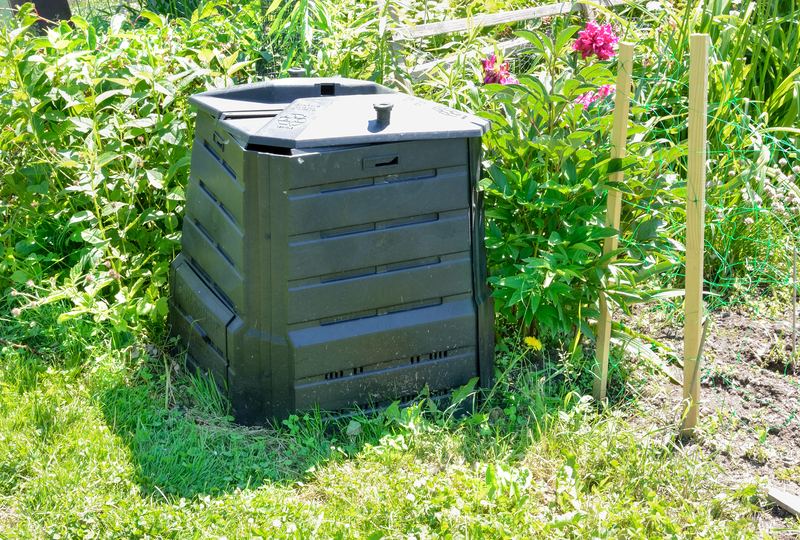How to Keep the Environment Safe When Disposing of PPE Waste
The ongoing necessity of personal protective equipment (PPE) in various fields, especially since the outbreak of COVID-19, has significantly increased the amount of PPE waste generating concerns about its environmental impact. PPE items such as masks, gloves, face shields, and gowns are essential for maintaining human health and safety, but their disposal presents unique challenges. To maintain a healthy planet, learning how to keep the environment safe when disposing of PPE waste is crucial for individuals, businesses, and communities. In this comprehensive guide, we'll explore effective and eco-friendly ways to manage PPE waste responsibly, minimizing damage to our ecosystem.
Understanding the Scope of PPE Waste
COVID-19, as well as ongoing healthcare and industrial needs, have led to a sharp rise in PPE usage worldwide. According to the World Health Organization, millions of tons of PPE waste have been generated since 2020. PPE materials are often made from single-use plastics and polymers that do not break down quickly in the environment, raising concerns about pollution, wildlife hazards, and increased landfill congestion.
- Masks: Commonly made of polypropylene, a type of plastic, which can take hundreds of years to decompose.
- Gloves: Frequently latex, rubber, nitrile, or vinyl, all of which can be problematic for typical waste streams.
- Gowns and Face Shields: Often constructed from mixed plastic fibers and other synthetic materials.
The improper disposal of these items can result in:
- Microplastic contamination in soil and water
- Wildlife entanglement and ingestion
- Public health risks due to potentially contaminated waste

Why Eco-Friendly PPE Waste Disposal Is Essential
Proper PPE waste management is necessary not only to curb direct environmental harm but also to foster sustainable resource usage and safeguard communities. Here's why eco-friendly PPE disposal matters:
- Prevents pollution: Reduces microplastic and chemical release into the environment.
- Protects biodiversity: Minimizes risks to animals that could ingest or become entangled in plastic PPE components.
- Supports public health: Limits the spread of infectious materials from contaminated PPE waste.
- Encourages sustainable practices: Shifts societal mindset toward environmental responsibility and safer waste management habits.
Best Practices for Disposing of PPE Waste Safely
Now that we understand the scope and necessity, let's discuss action-oriented strategies for eco-friendly PPE disposal.
1. Segregate PPE Waste from Regular Waste
It is crucial to separate PPE waste from regular household or office trash. Mixing contaminated PPE with recyclable or compostable materials can create health hazards and hinder recycling efforts.
- Use dedicated bins: Label and place color-coded bins for PPE waste at homes, businesses, and public spaces.
- Seal PPE before disposal: Put used PPE items in sealable bags before placing them in the correct bin, especially if there's a risk of contamination.
2. Do Not Recycle Contaminated PPE with Regular Recyclables
Although many PPE items are plastic-based, they generally cannot be recycled through standard recycling programs due to contamination risks and material composition challenges.
- Avoid putting masks, gloves, or gowns in general recycling.
- If available, utilize special PPE recycling programs (more on this below).
3. Participate in PPE Recycling Initiatives
Some companies and organizations now offer specialized recycling solutions for PPE waste, collecting, sanitizing, and repurposing items into useful products.
- TerraCycle: Offers PPE Zero Waste Boxes where individuals or businesses can send used masks and gloves for safe recycling.
- Local authorities: Some municipalities have started pilot programs for PPE waste collection and processing.
*Contact your local authorities or search online for available PPE recycling options in your region.
4. Opt for Reusable PPE When Possible
A powerful step in reducing PPE waste is choosing reusable alternatives when safety and regulations allow. Washing and reusing PPE like cloth masks can dramatically lower the total waste generated.
- Use cloth masks with multiple layers for daily use, washing them routinely in hot water with soap.
- In occupational settings, consider reusable gowns and shields that are designed for disinfection between uses.
5. Safe Handling and Storage Prior to Disposal
Minimize the risk of infection and contamination during disposal:
- Handle used PPE with gloves or tongs if possible.
- Do not shake items, which could dispers particulate matter.
- Store used PPE in a closed container out of children's reach until collection or final disposal.
6. Educate and Inform Others
Awareness is key to effective PPE waste management. Share accurate information about proper disposal methods with family, friends, colleagues, and the broader community.
- Display disposal instructions near waste bins.
- Encourage businesses and institutions to adopt environmentally safe PPE policies and workshops.
Special Considerations for Medical and Hazardous PPE Waste
Healthcare settings or situations involving hazardous contamination (e.g., working with chemicals, infection zones) require additional protocols:
- Use red biohazard bags to collect infectious PPE waste.
- Arrange for collection by licensed hazardous waste management firms.
- Follow legal and occupational regulations governing biohazard waste disposal--never dispose of medical PPE in regular trash or sewers.
Improper disposal of biomedical PPE can spread pathogens and pose significant environmental hazards. Always comply with local health and safety guidelines.
Environmental Innovations: Sustainable PPE and Circular Economy
The rise in PPE waste has spurred innovation in eco-friendly PPE alternatives and disposal solutions:
- Biodegradable PPE: Researchers have developed masks, gloves, and gowns from plant-based materials that degrade faster and are safer for the environment.
- Circular economy initiatives: Some companies process used PPE as an input for manufacturing construction materials, fuel, or other plastic products.
- PPE sterilization and re-use: Advanced sterilization technologies allow certain PPE items to be safely reused, reducing overall demand and waste.
Supporting these innovations is a proactive way to help protect the environment and encourage broader adoption of sustainable PPE solutions.
Key Dos and Don'ts of PPE Waste Disposal
- Do: Always separate PPE waste from general and recyclable waste streams.
- Do: Follow local and national guidelines for hazardous and infectious waste.
- Do: Seek out reputable PPE recycling or collection programs.
- Do: Educate those around you on the importance of safe PPE waste disposal.
- Don't: Throw masks or gloves on the ground or in public spaces, as litter causes environmental and health hazards.
- Don't: Put used PPE in blue bin recycling programs unless specifically directed by your local authorities.
- Don't: Incinerate PPE at home, as harmful toxins may be released without proper facilities.
Community-Level Solutions to PPE Waste Pollution
Communities can take collective action to significantly mitigate PPE waste problems:
- Organize local PPE collection drives: Gather used PPE in safe containers for mass disposal through authorized channels.
- Advocate for public PPE bins: Request municipal authorities to provide dedicated PPE waste bins in public areas such as parks and transit hubs.
- Promote public education campaigns: Utilize schools, businesses, and local media to spread awareness on proper PPE waste management.
- Support responsible PPE manufacturers: Encourage use of sustainably produced, biodegradable, or easily recyclable PPE products.

Policy and Regulatory Moves for Safer PPE Disposal
Governmental and institutional action plays a vital role in ensuring environmentally safe PPE disposal. Policy recommendations include:
- Mandating clear labeling on PPE items about proper disposal methods.
- Allocating funds and infrastructure for PPE-specific waste management systems.
- Providing tax relief or incentives for companies investing in PPE recycling or biodegradable alternatives.
- Requiring organizations to track and report PPE waste volumes for improved accountability.
Strong policy frameworks support greener choices at every level and pave the way to a safer and cleaner environment.
Conclusion: Our Responsibility in PPE Waste Management
Learning how to keep the environment safe when disposing of PPE waste is more important than ever. From using reusable options and supporting recycling initiatives, to following correct disposal practices and advocating for policy changes, every action contributes to a safer and more sustainable world. Together, through informed decisions and shared responsibility, we can protect both human health and the environment from the adverse impacts of PPE pollution.
Remember
- *Always check and follow local laws and guidelines for PPE waste disposal.
- *Stay informed about new green technologies and recycling programs near you.
- *Educate others and lead by example--every mindful disposal counts.
By embracing and promoting responsible PPE waste management, we ensure that safety for ourselves does not come at the cost of planetary well-being. For the sake of our communities and future generations, let's make eco-friendly PPE waste practices a daily commitment!
